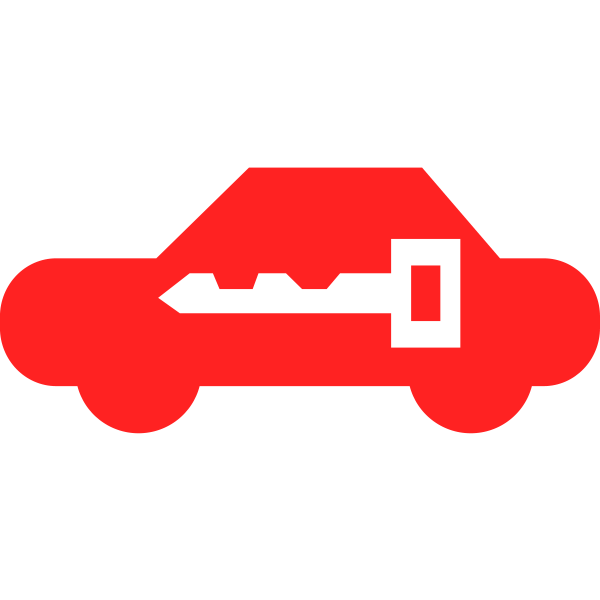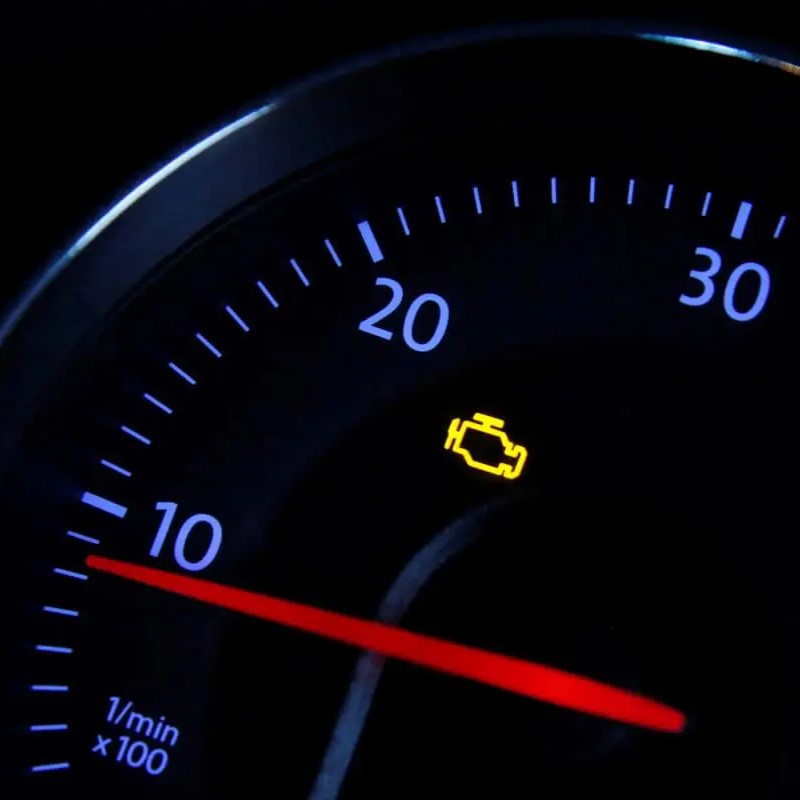Have you ever been cruising down the road when suddenly your car shudders violently, and a glaring orange light illuminates your dashboard? A blinking check engine light accompanied by car shaking is a nerve-wracking experience for any driver. However, before you pull over in a panic, take a deep breath. While this situation certainly warrants attention, it doesn’t necessarily spell doom for your car.
Understanding the Check Engine Light
The check engine light, formally known as the malfunction indicator lamp (MIL), is your car’s way of communicating that something isn’t quite right with its internal systems. Modern cars are equipped with numerous sensors that constantly monitor various engine functions, emissions, and performance parameters. When a sensor detects a problem that falls outside the expected range, the check engine light illuminates, alerting you to a potential issue.
There are two main types of check engine light behavior: steady illumination and blinking. A steady light typically indicates a less severe issue, such as a loose gas cap or faulty sensor. However, a blinking check engine light signifies a more serious problem, often related to engine misfires.

Engine Misfire: The Culprit Behind the Shaking
A car shaking with a blinking check engine light points towards a strong possibility – an engine misfire. An engine misfire occurs when one or more cylinders in your engine fail to combust fuel properly. This can happen for several reasons, but the most common culprits include:
- Faulty Spark Plugs: Spark plugs are responsible for igniting the air-fuel mixture within each cylinder. Worn-out or fouled spark plugs can deliver weak or inconsistent sparks, leading to misfires.
- Ignition Coil Failure: The ignition coil provides the high voltage necessary for the spark plugs to function. A malfunctioning coil can prevent proper spark generation, causing misfires.
- Vacuum Leaks: Leaks in the intake system can allow unmetered air to enter the engine, disrupting the air-fuel ratio and leading to misfires.
- Fuel Injector Issues: Clogged or faulty fuel injectors can prevent the proper amount of fuel from reaching the cylinders, resulting in misfires.
Why is a Misfire a Concern?
While a single misfire might not be immediately noticeable, consistent misfires can cause significant problems for your car. The unburnt fuel from the misfiring cylinder gets dumped into the exhaust system, which can damage the catalytic converter – an expensive component responsible for reducing emissions. Additionally, misfires can lead to reduced engine power, increased fuel consumption, and rough idling.

What to Do When Your Car Shakes and the Check Engine Light Blinks
If you experience a blinking check engine light accompanied by car shaking, here’s what you should do:
- Pull Over Safely: Don’t ignore the warning signs. As soon as it’s safe to do so, pull your car over to the side of the road and turn off the engine. Continuing to drive with a severe misfire can cause further damage.
- Turn on Hazard Lights: Turn on your hazard lights to alert other drivers of your situation.
- Assess the Situation: Once stopped, take a moment to assess the situation. Check for any other warning lights on the dashboard and note any additional symptoms, such as unusual noises or smells coming from the engine.
- Consult Your Owner’s Manual: Refer to your car’s owner’s manual for specific instructions related to a blinking check engine light. The manual might offer troubleshooting tips or suggest recommended actions.
Should You Drive with a Blinking Check Engine Light and Car Shaking?
In general, it’s highly discouraged to drive your car further if it’s experiencing a severe misfire with a blinking check engine light. The potential for further damage outweighs the convenience of getting to your destination. Call for roadside assistance or have your car towed to a qualified mechanic for diagnosis and repair.

Diagnosing the Problem
Diagnosing the exact cause of the engine misfire requires a mechanic’s expertise and specialized tools. A mechanic will typically use a diagnostic scan tool to retrieve any trouble codes stored by the car’s computer system. These codes can provide valuable clues about the source of the problem. Additionally, the mechanic will perform a physical inspection of the engine components, including the spark plugs, ignition coils, and vacuum lines, to identify any visible issues.
Repairing the Misfire
The repairs for an engine misfire will depend on the specific cause identified by the mechanic. Common fixes include:
- Replacing Spark Plugs: Spark plugs are considered wear-and-tear items and should be replaced at regular intervals according to your car’s maintenance schedule.
- Ignition Coil Replacement: Faulty ignition coils typically need to be replaced entirely.
- Repairing Vacuum Leaks: Depending on the location and severity of the leak, the mechanic might be able to repair the existing vacuum line or replace it altogether.
- Cleaning or Replacing Fuel Injectors: Clogged injectors can sometimes be cleaned, but in some cases, replacement might be necessary.

Preventing Engine Misfires
The best way to deal with engine misfires is to prevent them from happening in the first place. Here are some preventative measures you can take:
- Regular Maintenance: Sticking to your car’s recommended maintenance schedule is crucial. This includes timely replacement of spark plugs, air filters, and other wear-and-tear items.
- Quality Fuel: Using high-quality fuel helps to keep your engine components clean and functioning optimally.
- Warn-Up Time: Avoid putting a heavy load on your engine when it’s cold. Allow the engine to warm up for a few minutes before driving off.
Seeking Professional Help:
While the previous article provided some general information on diagnosing a misfire, it’s important to understand that complex engine issues are best addressed by qualified mechanics. Here are some key indicators that professional help is necessary:
- Severity of Symptoms: If the car shaking is violent, accompanied by a loss of power, or strange noises from the engine, don’t hesitate to seek professional help immediately. These symptoms suggest a more severe underlying issue that requires expert attention.
- Lack of Mechanical Knowledge: Attempting to diagnose and fix a misfire yourself can be risky, especially if you lack experience working on cars. Don’t be afraid to admit your limitations. A mechanic can accurately pinpoint the problem and ensure the repairs are done correctly.
- Advanced Diagnostic Tools: Modern cars rely heavily on computer systems to manage engine functions. Diagnosing the problem often requires specialized scan tools that can interpret complex trouble codes. Mechanics have access to these tools and the expertise to interpret the data.
- Extensive Repairs: While some misfire fixes might be relatively simple, such as replacing spark plugs, others might involve more complex repairs like replacing ignition coils or repairing significant vacuum leaks. If the repairs seem beyond your skillset, leave it to the professionals.
Benefits of Professional Repair
There are several advantages to seeking professional help for a misfiring engine:
- Accurate Diagnosis: A mechanic can accurately diagnose the root cause of the misfire, preventing you from replacing unnecessary parts or wasting time on ineffective solutions.
- Proper Repairs: Qualified mechanics have the experience and tools to perform the repairs correctly, ensuring a lasting solution and preventing further damage.
- Warranty Coverage: Repairs performed by certified mechanics often come with warranties, providing peace of mind and potential cost savings in case of issues arising from the repair itself.
- Safety: Addressing a misfire promptly can prevent further damage to your car’s engine and exhaust system, ensuring safer operation on the road.
Finding a Qualified Mechanic
Finding a trustworthy mechanic is crucial. Here are some tips:
- Ask for Recommendations: Talk to friends, family, or colleagues for recommendations on reliable mechanics in your area.
- Check Online Reviews: Look for online reviews of mechanics in your area, paying attention to customer feedback on quality of service and repairs.
- Look for Certifications: Consider mechanics who are certified by organizations like the National Institute for Automotive Service Excellence (ASE).
- Get Quotes: Don’t be afraid to get quotes from several mechanics before making a decision. This allows you to compare prices and services offered.
By understanding when to seek professional help and following these tips for finding a qualified mechanic, you can ensure your car’s misfire gets addressed effectively and efficiently. Remember, a timely and professional repair can save you money in the long run and keep your car running smoothly for miles to come.

A blinking check engine light accompanied by car shaking is a cause for concern, but it doesn’t have to be a reason to panic. By understanding the potential causes and taking appropriate action, you can minimize damage and get your car back on the road. Remember, prioritizing safety and seeking professional help are key to resolving the issue effectively. With proper diagnosis and repair, you can address the misfire and ensure smooth operation of your car.





